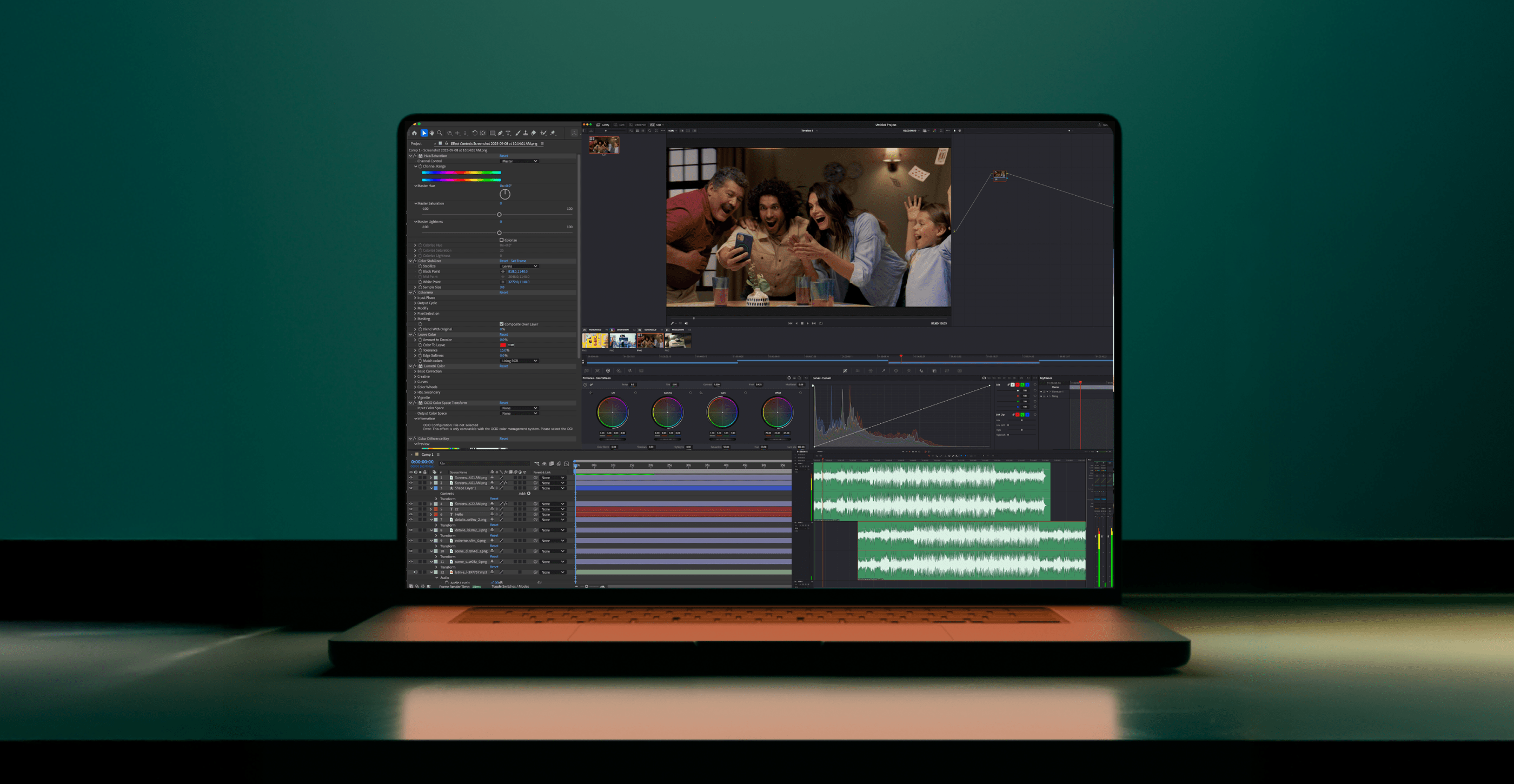How We Smashed our Cost Per Lead Goal with a Smart Bet on UGC-Style Ads

At Superside, we've made a big bet on video, and it's been paying off. In particular, we've been experimenting with UGC-style (user-generated content) video ads. Overall, UGC-style video has delivered a 217% increase in lead acquisition and cut our cost-per-lead by 45% month over month.
With our latest experiment in the rearview mirror, there’s a lot we’ve learned that may challenge what you think you know about what works in B2B marketing.
We sat down with Marcus Moraes, a growth marketing specialist on our team, to share just how valuable experimenting with video content has been to our paid strategy and what you can take with you into yours.
In this article, I’ll break down this successful video ad campaign and dive into how we built it and what we learned. Hopefully, it will help you start experimenting with video and give you the inspiration to integrate UGC-style content into your next campaign planning session.
Here’s what we cover:
- Why We Wanted to Test UGC-Style Ads in the First Place
- The Creative Scope of Our UGC TOFU Ads
- 3 Battle-Tested Learnings for UGC-Style Videos You Should Steal
- Get the Most Out of your Ad Campaigns by Refreshing your Creatives Regularly
- Take a Modular Approach to Scaling your Video Marketing Capability
Why We Wanted to Test UGC-Style Ads in the First Place
UGC Video vs. UGC-Style
Earlier this year, our performance marketing team experimented with some influencer video ads. While they performed fairly well, it left us wondering just how much lift the influencer had over metrics.
We tested this by running a similar campaign with a slight tweak on the creative: Taking the influencer out of the equation. Instead, we used the same script and content but delivered by our own talent. To our surprise, it performed even better.
Our in-house produced ad performed much better with our CPA (Cost per action, in this case demos booked) dropping by 30% compared to "real" influencer content.
Pro-tip: You don’t need a stacked influencer strategy to reap the benefits of UGC-style video. Mimicking a UGC tone and style with in-house video can do the trick.
Naturally, we dug deeper into UGC-style content and explored how it could improve our campaign performance.
The Creative Scope of Our UGC TOFU Ads
Prior to this experiment, we hadn’t used UGC-style creative in our performance marketing strategy. Our marketing mix consisted of static ads and more traditional video ads. Moreover, we hadn’t changed or refreshed the ad creative in 6 months (more on that important note later).
Hypothesis in hand, we created UGC-style ads for all three of our design guides, with CTAs that led to their respective landing pages.
The three guides we focused on were our:
The results? Well, they were interesting, to say the least.
3 Battle-Tested Learnings for UGC-Style Videos You Should Steal
We scripted at least two videos for each guide and filmed them with cheeky cameos from folks on the marketing team.
From our tests, we came away with three key learnings that can inspire different approaches to UGC-style video ads. Here’s what we learned and ideas you can steal for your next campaign:
1. Tap into your audience’s aspirations and curiosity instead of rehashing pain points
For our Design Leadership guide, we experimented with openers in this ad set and found that an aspirational, curiosity-driven opening question performed better than a question that touched on a pain point. The video that opened with “Wanna know how brands like Adobe run their marketing teams?” performed better than the one that asks, “Is your design team in a rut?”
It seems that when it comes to problem-solving, curiosity beats empathy. This may stem from people looking to solve the problem through inspiration rather than just focusing on the problem.
2. Script skits into your videos
For our Design Dysfunctions guide, we wanted to experiment with integrating a short relatable skit into the script. We found that leading with the skit and then cutting to the creator performed better than the ad that had the actors in the skit directly interacting with the main “creator/influencer.”
We also found that in comments discussing the video, people commented on the skit, which could lead us to assume the skit was what first caught people’s attention.
It seems small but it’s valuable to know that you don’t need the “actors” and “creators” in the same scenes when thinking about coordinating filming schedules, especially if you’re asking colleagues to showcase their acting skills.
3. Tap into your audience’s strengths before suggesting the gaps you can help them fill
Sprinkling in a little flattery seemed to work for this A/B test. When it came to our Digital Ad Design guide, the video that opened with a list of the perceived strengths of the target audience performed better than the variation that jumped straight into what the guide included.
This tactic shows your company’s industry knowledge and also creates a direct connection between you and your audience.
Pro-tip: Make sure the shoe fits.
We ran this campaign on Facebook ads, which meant on top of creating ad variations for each guide we were driving to, we needed each variation in two sizes. This is important to remember when investing in time-intensive strategies like video marketing. Being able to properly edit your videos for different ad formats and platforms can help you maximize the return on investment.
Get the Most Out of Your Ad Campaigns by Refreshing Your Creatives Regularly
While we were ecstatic about the results of this experiment, it was a wake-up call. We were confronted with the inescapable reality of running this kind of ad. To maximize results, it's imperative to refresh ad creative on a regular basis. Above all, doing so leads to that sweet, sweet low cost per lead.
We’ve noticed gains in CPL and leads generated tend to sizzle out after 7 days which is why, ideally, our performance marketing team recommends refreshing your ad creative every 1 to 2 weeks. This is only really possible if you’re continuously iterating on your ads and it's not sustainable if you’re brainstorming completely new ideas for video ads every week.
Your ability to regularly refresh creative hinges on your capacity to prioritize experiments you can learn from to guide subsequent campaigns.
This begs the question (and follow-up questions):
- Do you have the creative capacity to get the most out of your testing strategy?
- Do you have writers that can pump out multiple scripts?
- Do you have a video production team that will film, edit and resize your videos in different formats?
- Do you have a creative director to ensure that it’s on brand and the creative is compelling every time?
It may seem overwhelming to get all these ducks in a row just to be able to take advantage of video marketing. It’s also quite a stretch to assume every marketing team has access to these resources.
While we had these resources available to us, you might only have a fraction of the talent you need. But that shouldn’t prevent your own team’s foray into video marketing. Because guess what? This is totally possible without a decked-out in-house video team.
Take a Modular Approach to Scaling your Video Marketing Capability
You know it, I know it, even the Milwaukee Public Library knows it: A stellar video marketing campaign is key if you want to stand out online. But amidst layoffs, uncertainty, and budget cuts, provisioning your team to be fit for video can be a tall order. Being deliberate and iterative when it comes to building up your video strategy helps you mitigate risk and scale more confidently.
Using a Creative-as-a-Service (CaaS) solution like Superside is a great way to access video marketing. It can also help you exercise that muscle by giving you the ability to complement your team’s existing strengths and fill the gaps that are stopping you from taking advantage of video.
Audit Your Existing Video Resources
To make the right bets as you’re building your video marketing strategy, it’s important to take stock of your existing video resources, and your potential resources. Ask yourself this question: What skills do you have at your disposal internally? You can categorize them into three groups:
- Strategy and Concept Creation
- Production
- Post-production
Understanding the resources you have available will help you understand the holes in bandwidth and skills that a third party can provide. It can also help you gain a clearer picture of your longer-term growth goals.
Narrow Down the Type of Video You Want to Bet On
While our team found success with UGC-style video ads, your audience might resonate more with another type. At Superside, we have four main categories that we use when we think about video that can help you understand the support, skills and expertise your video strategy needs:
- Scripted digital ads - think customer testimonials, event videos. This is your more traditional video that focuses on showcasing your brand or educating your audience on your product.
- Documentary style - story-based content can add a more inviting and entertaining feel to your video ads.
- Creator-led style - the category UGC-style ads would fall under, but this can also be used to create thought-leadership-style video content.
- Animation - might include animated explainer videos or data visualization. Anything that is motion graphics led.
Bet on a Sustainable Video Strategy
Finally, lean on the video capabilities that will make a long-term video strategy possible. A sustainable video strategy is one that consistently tests new creative content. For you, this might mean support in scripting and concepting new video iterations or filming support.
Or, it might be re-purposing a great video ad into different formats. This will help you prioritize the support that will make the biggest lift without completely re-inventing your existing strategy. At whatever stage you find your video strategy in, always prioritize experimentation if you want to maximize the gains you see with video.
Laurella is a Product Marketing Specialist at Superside. With a background in B2B SaaS and a penchant for mind maps, she’s written content tackling everything from gender-biased design to partnership strategy. At Superside, she helps unearth nuggets of customer insights and makes them shine in case studies and articles. As a pandemic graduate, she finds the idea of watercooler-slack-channels scary but is always eager to send you a well-crafted meme. Connect with her on Linkedin.
You may also like these

Video Production Consulting Firms & Costs for Brands in 2026
Nearly every marketer today (95%) agrees that video is essential to their digital marketing strategies. Yet more than a third admit they don’t even know where to start.That’s because truly superb video doesn’t just happen. It takes sharp creative vision, flawless execution and a team with the bandwidth to deliver at the speed and scale the market now demands. Most in-house teams simply can’t do it all.That’s where video production consulting comes in. With external strategists, creative directors, editors, animators and producers working in sync, the right partner can help you capture attention, keep your audience engaged and drive significant ROI.At Superside, for one, we go well beyond basic video production to help our customers get eyes on their brands. From in-depth brand discovery sessions and strategy development to narrative planning and creative execution, we act as a true partner on any video consultation project that comes our way.In this article, you’ll learn how to choose the perfect video production consulting service for your enterprise, what to look for in a long-term partner and which firms lead the way right now.
Top 8+ examples of graphic design for SaaS in 2025
Five hundredths of a second. That’s how long it takes potential customers to form an opinion about your website and decide whether they’ll stick around or bounce off to a competitor’s page.The impression they make in that split-second determines whether prospects find their brand trustworthy and whether they’re likely to convert.Unfortunately, however, many SaaS companies still miss the mark. They treat design as interface work only, and overlook the equally critical brand identity and marketing elements that shape user perception.That’s why top SaaS companies pay close attention to the design of their entire customer journey and integrate everything from web design to video production under a single, unified brand identity.It’s a tall order, which is why many partner with AI-powered SaaS design partners like Superside. The right partners combine various creative design services across product, brand, marketing and visual design under one roof to ensure every design output matches the last.
16 best B2B SaaS video examples from 2025
Today’s SaaS customers don’t have time to read 50-page whitepapers or sit through lengthy presentations. They skim, compare and decide on a product in a matter of minutes.With video, you can quickly demonstrate your value and drive more free trials and subscriptions. In fact, 93% of B2B buyers say video builds brand trust, and 91% of consumers feel more confident to purchase a product after they’ve watched a video.In 2026, a successful SaaS video strategy engages prospects at every stage of the marketing funnel and cuts through the noise in a crowded market. Explainer videos can, for example, build initial brand awareness, while product demos can deepen consideration. Shorter demos, feature deep dives and launch videos that also serve as PR tools now reign supreme.Already feeling a tad overwhelmed? We get it. It’s tough to produce a consistent stream of high-quality video, especially if your in-house team is stretched to the max.Let’s first explore the types of SaaS videos that work like a charm and unpack 2025’s best SaaS video marketing examples to inspire your 2026 video strategy.








